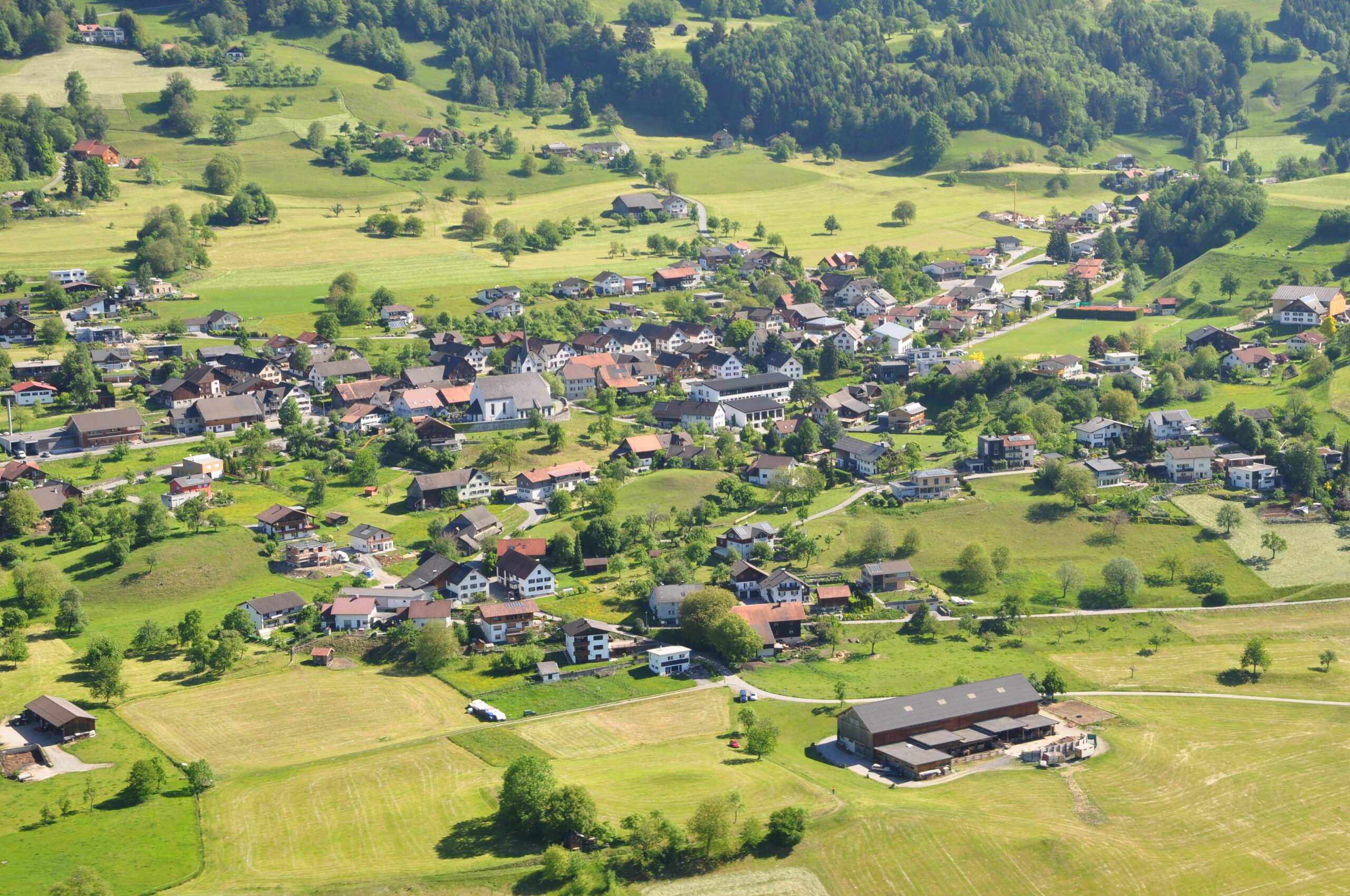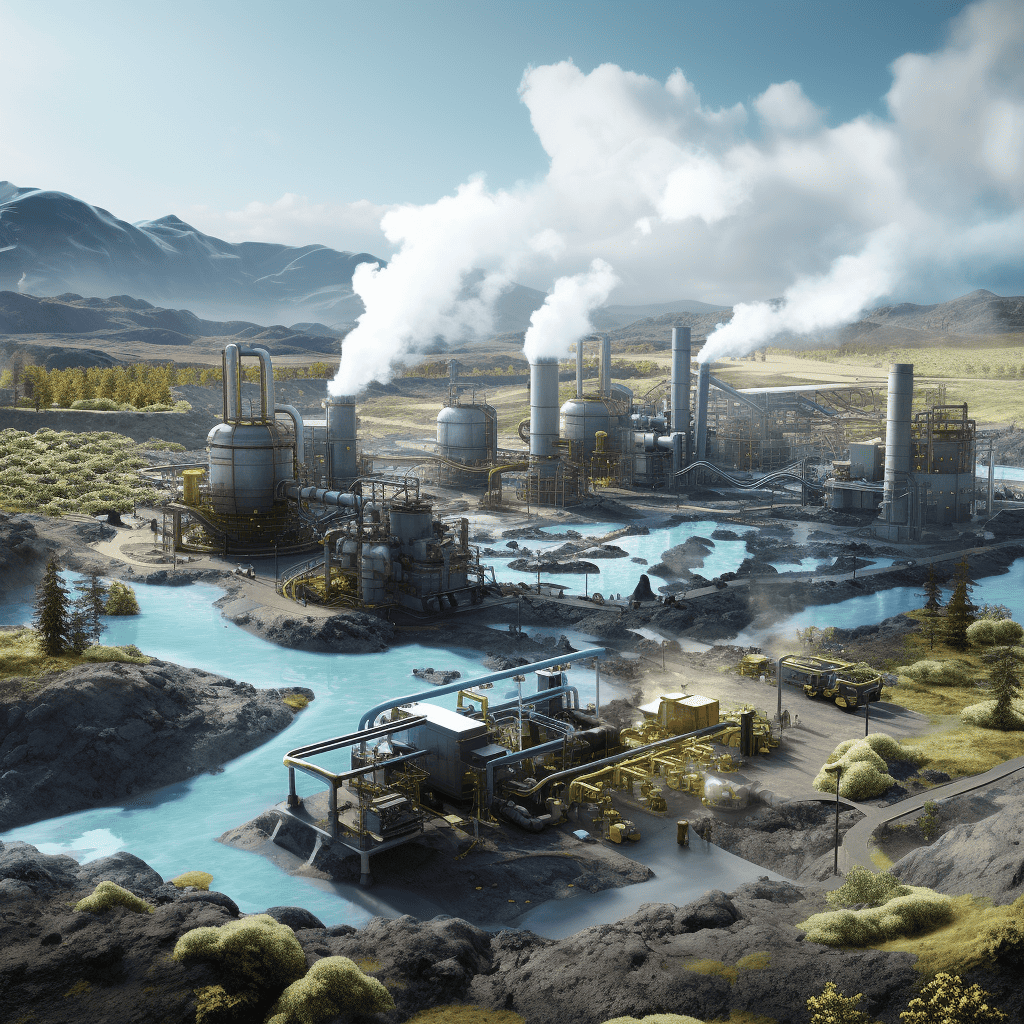
In Austria, every citizen can become part of the energy transition. This was decided in July 2021 with the Renewable Energy Expansion Act (EAG). It enables local citizen energy communities that generate electricity privately to exchange it within the community on a neighborly basis. With this law, the government wants to accelerate the expansion of renewable energy. It plans to invest one billion euros annually by 2030, promoting photovoltaic systems, wind power, hydropower and biomass.
Democratization
A particularly ambitious pilot project is underway in Schnifis in Vorarlberg, a community located in a narrow valley 657 meters above sea level. Here, the municipality, local businesses and 30 citizens operate a renewable energy community (REC) that goes beyond just electricity trading among neighbors. Instead, the renewable energy community is seen as an opportunity to democratize power generation. They have already come to an agreement on carbon insetting. This means that the partners invest in the production of electricity to gradually make it more sustainable and thus make it locally climate-effective. Additional costs incurred are charged at a fair price based on the kWh price.
In this model, the electricity in the REC isn’t any cheaper, but it’s no more expensive than electricity from the grid operators. This is because, by law, various levies do not apply to electricity traded within an REC and grid charges are reduced. Savings according to EAG u EIWOG §§16b u c are reinvested in Schnifis to green the supply chain.
Glocal Green Deal
Project manager Mátyás Scheibler speaks of a glocal Green Deal. This was made possible by a quasi-sector coupling of agriculture and the energy industry. This makes it possible to exploit agro-ecological synergy effects. The economy of the community of 809 inhabitants is essentially based on agriculture. The starting point for the REC was a dairy farm that owns a biogas plant as well as an alpine dairy that produces two million liters of whey annually, previudly a waste product. In the REC, whey once again becomes a valuable raw material as an input substrate for the operation of the biogas plant. The whey is co-fermented with liquid manure, producing biogas that is converted into electricity in a combined heat and power plant. This electricity supplies the farm and the REC, which includes the alpine dairy. This creates a closed energy loop.

The fermentation residues from the biogas plant are rich in nutrients and used as a natural organic agricultural fertilizer, contributing to regenerative agriculture. The application of fermentation residues to the soil in the correct dosage, in the right way and at the right time improves the soil structure and increases the humus content. Consequently, the fermentation residues can be used by the farmers in Schnifis and contribute to an improvement of the soil.
Circular economy
This is what Scheibler values about biogas – the low-tech possibility of a valuable circular economy that has the potential to be a local carbon sink. What is fermented in the biogas plant sequesters exactly the amount of C02 released when the subsequent biogas is burned. Biogas is therefore a CO₂ neutral, renewable energy source. In the case of agriculture, the grey energy involved must be deducted, for instance, the fuel for haymaking and feeding. But it is still climate neutral, says Scheibler. Another thing in favor of biogas is its independence from the weather. This means it can compensate for fluctuations in the power grid inherent in photovoltaic systems.
Also interesting: Austria plans future-oriented infrastructure with Recovery and Resilience Facility
Reducing greenhouse gases
But it is important to learn from past mistakes, Scheibler said. After all, in the biogas offensive of the noughties, the focus was on economic power generation. As a result, corn and other energy crops in the eastern foothills of the Alps and parts of Germany are now energy crop monocultures, says the biologist and expert in the field of biogas applications for liquid manure farms in the alpine foothills. In addition, pure manure biogas plants were long considered uneconomical. But now it is manure that will ensure the continued operation of existing biogas plants. This is because the use of solid manure and slurry for energy contributes significantly to the reduction of agricultural greenhouse gas emissions. The fermentation process can greatly reduce methane and nitrous oxide emissions that inevitably occur when farm manure is stored.
This also describes perhaps the greatest environmental contribution of the farmers in Schnifis to ecological electricity production. The biogas plant can be operated with whey as well as with liquid manure. An additional advantage of the biogas plant is that the fermented liquid manure results in a significantly lower odor nuisance for the village residents.
The farmers also come up with their own individual solutions to reduce greenhouse gases. No one is dictating to them. Inclusion in the environment and climate portfolio of REC Schnifis is renegotiated annually. An example of a greening measure is animal feed, for example.
Making climate protection measurable
The greenhouse gas reduction scenarios were precisely measured and priced on the amount of electricity generated. To certify the quality of environmental and climate performance, the renewable energy community established two low-threshold quality assurance processes that are also viable for small agricultural enterprises: the Eco-profit Model and the Field Championship.
The Field Championship is a competition of managers of site-appropriate used fields. It is organized by the Department of Environmental and Climate Protection of the State of Vorarlberg and supported by the Vorarlberg Nature Conservation Council.
The Eco-profit Model (Ökologisches Projekt Für Integrierte Umwelt-Technik) is a model for the sustainable development of a region. It introduces companies to the principles of precautionary company-specific environmental protection – Cleaner Production – and enables them to develop an environmental program that is continuously improved. At the same time, the model provides a solid basis for cooperation between the municipality and local businesses.
Accounting
Intelligent electricity meters – so-called smart meters – have been installed at all participants in the renewable energy community to monitor electricity production and consumption. The smart meter of the local grid operator is connected by a sensor from the Cuculus company, collecting and sending data to a cloud via the household’s WIFI network every 15 minutes. A dynamic sharing key has been developed for power-sharing among prosumers. Users can track feed-in and draw data on an online platform in real time – and get tips for smart energy use.
The Software as a Service (SaaS) platform was developed together with ETH spin-off Exnaton. Two delivery approaches were mapped in the pilot: one-to-many and many-to-many. Beginning in fall 2022, every network operator in Austria will be able to implement many-to-many.
Project participants are the Stachniss family farm; the state of Vorarlberg, Austria;, illwerke vkw electricity works; Energieinstitut; and the Vorarlberg University of Applied Sciences.
Support us!
Innovation Origins is an independent news platform that has an unconventional revenue model. We are sponsored by companies that support our mission: to spread the story of innovation. Read more.
At Innovation Origins, you can always read our articles for free. We want to keep it that way. Have you enjoyed our articles so much that you want support our mission? Then use the button below:





